Celebrate Fall with fun easy math grid games for two or more players that promotes math manipulation, strategy, reading and plant identification…plus possibly getting to eat the game pieces! Included are versions for Pre-K through Kindergarten, First through Second Grade and Third through Fourth Grade.
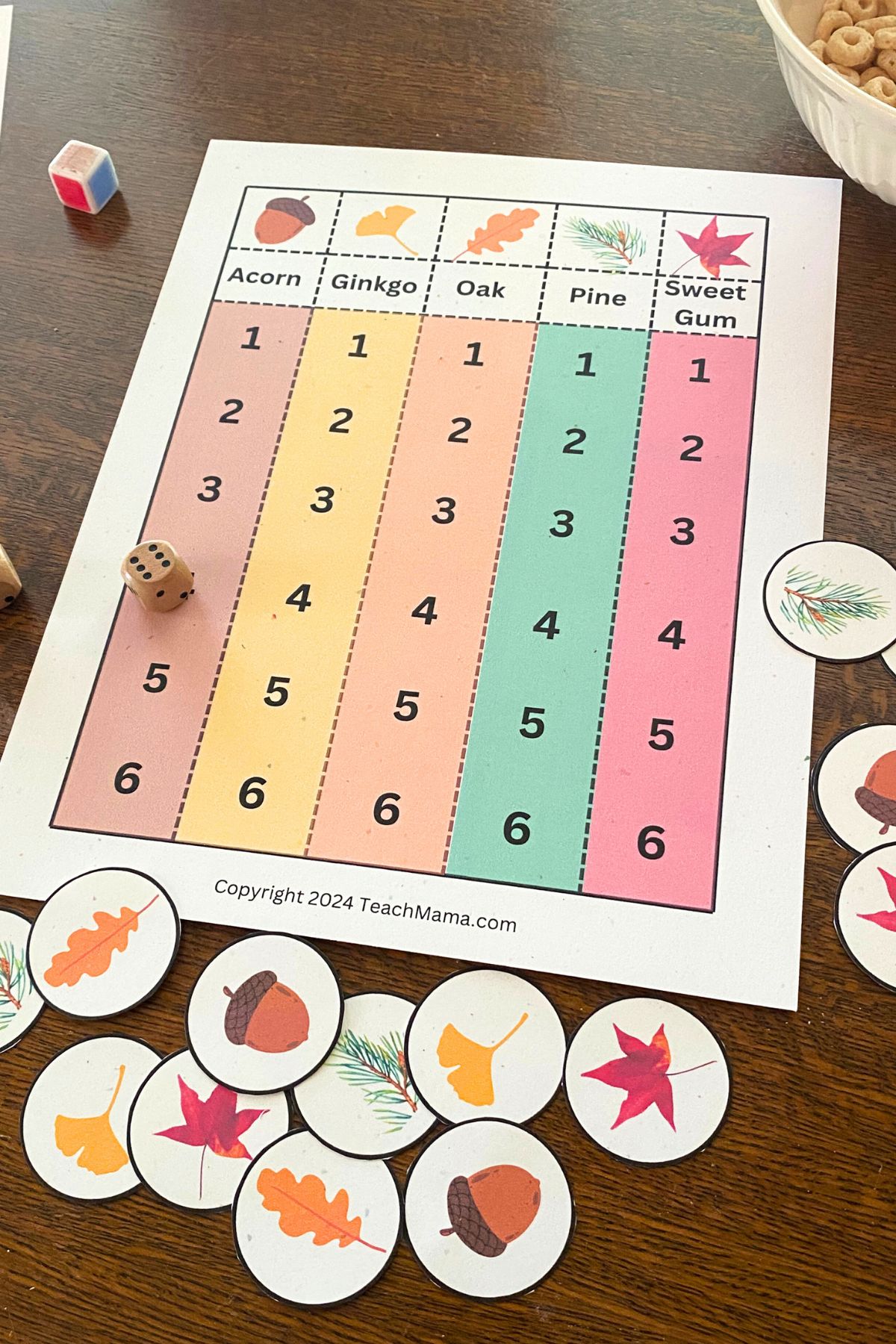
Fall is a tricky thing in Texas. Some years we have a glorious fall with all the colors, swirling leaves and cool crisp weather. And then there are the years we go straight from late brutally hot summer to winter in less than a week…
NO fall. That’s okay. Just turn down the AC, heat up some apple cider and play a few Easy Fun Fall Leaves Math Grid games.
The Easy Fun Fall Leaves Math Grid Game
Here’s What You Need:
Printed Grids
Laminated if you’re using edible markers for Beginner, Simple or Advanced version.
Game Markers
Edible markers can be cheerios, berries, apple chunks, ginger snaps, popcorn etc. Non-edible markers could be the ones included in the download or flattened marbles, pennies, buttons, etc.
One 1-6 die
Numerals or dots. For the Advanced version, you’ll need two dice.
One die with a different color on each side
Simple and Advanced versions of the game. If you don’t have one of these you can make one by putting paper tape on each side of a regular die and coloring in the appropriate colors. The Beginner version only needs the numbered die.
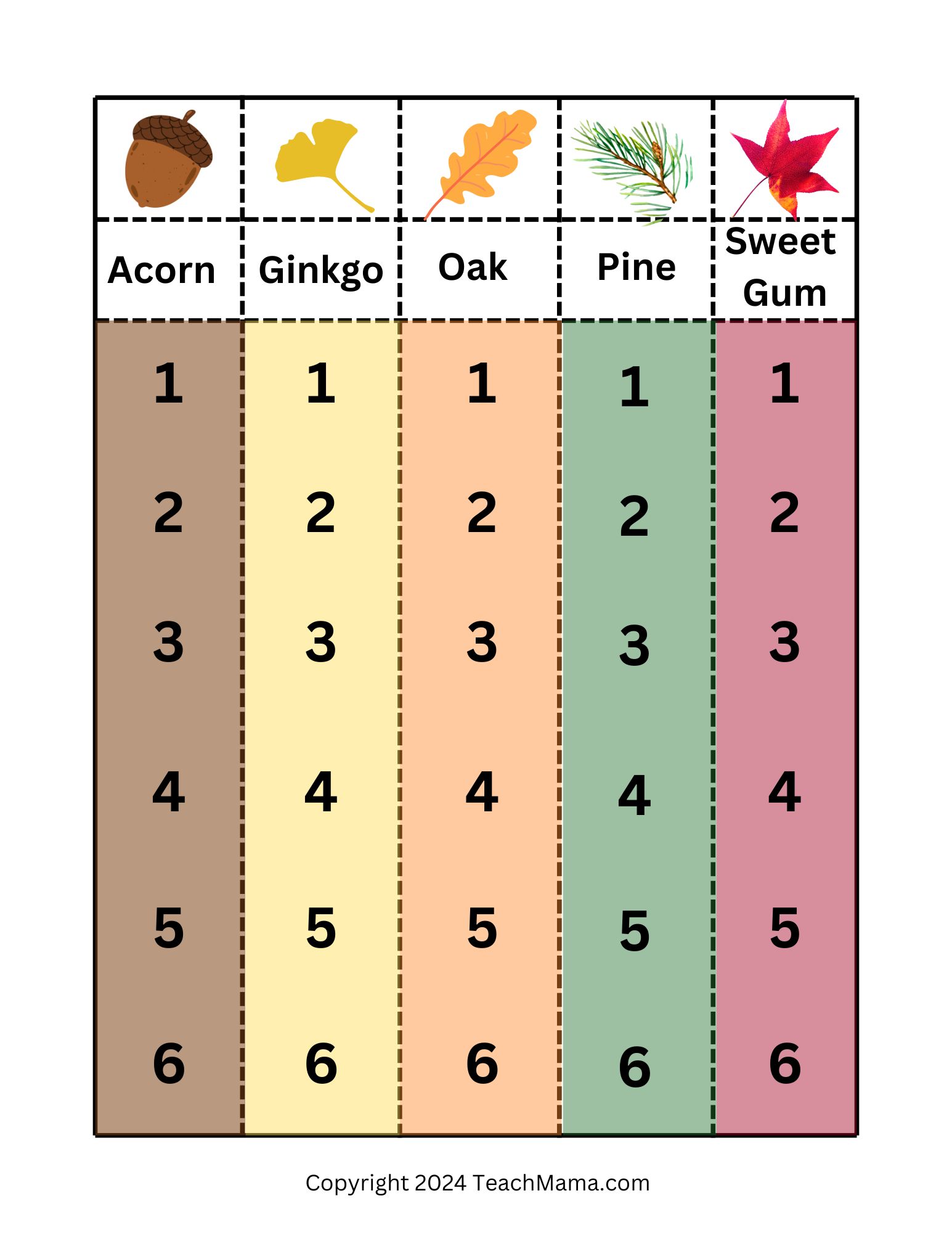
Start with the Super Easy Beginner Game for Pre-K and Kindergarten
This version of the game is perfect for young kiddos learning to move from left to right, counting out loud and placing markers accurately on the grid. Additionally they begin to be aware of the distinct leaf shapes and tree names.
- The player rolls the die and places markers on the grid starting from the upper left hand side moving across to the right and down the chart (the same pattern used in reading).
- The first player to fill up their grid wins and the markers (if edible) are eaten. There is no set number of rounds, so play until the little ones lose interest or until all the “markers” are eaten.
- Keeping score is completely optional.
Step Up to the Simple Fall Leaf Grid Game for First and Second Grade
Each person gets a grid sheet and access to a whole lot of markers (about 30 for the simple version and 60 for the advanced) We put our markers in a big bowl for everyone to draw from when it’s their turn.
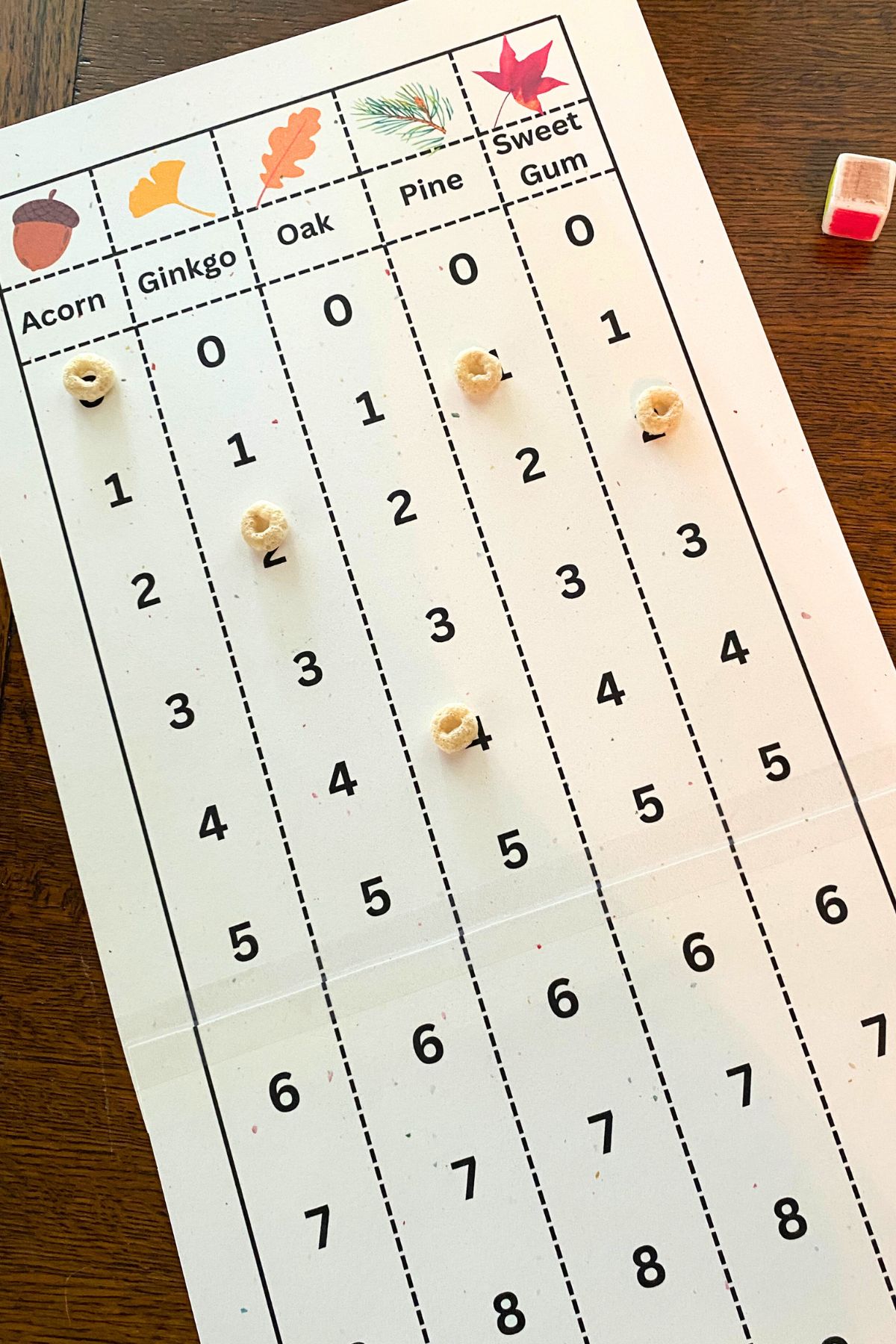
- The first player rolls the numbered and colored dice.
- Each side on the colored die coordinates with a leaf and tells the player in which column to put the marker.
- The number die tells them which number to cover.
- If the number they roll is already covered they can’t do anything, and play passes to the next player.
- If the player rolls blue, they get to pick who has to remove a piece from their grid.
- If you’re using edible markers this means that player eats one of his markers!
- The first person to cover all the spaces under one leaf wins that round.
- You can set how many rounds will be played beforehand or you can just play until all the markers are gone!
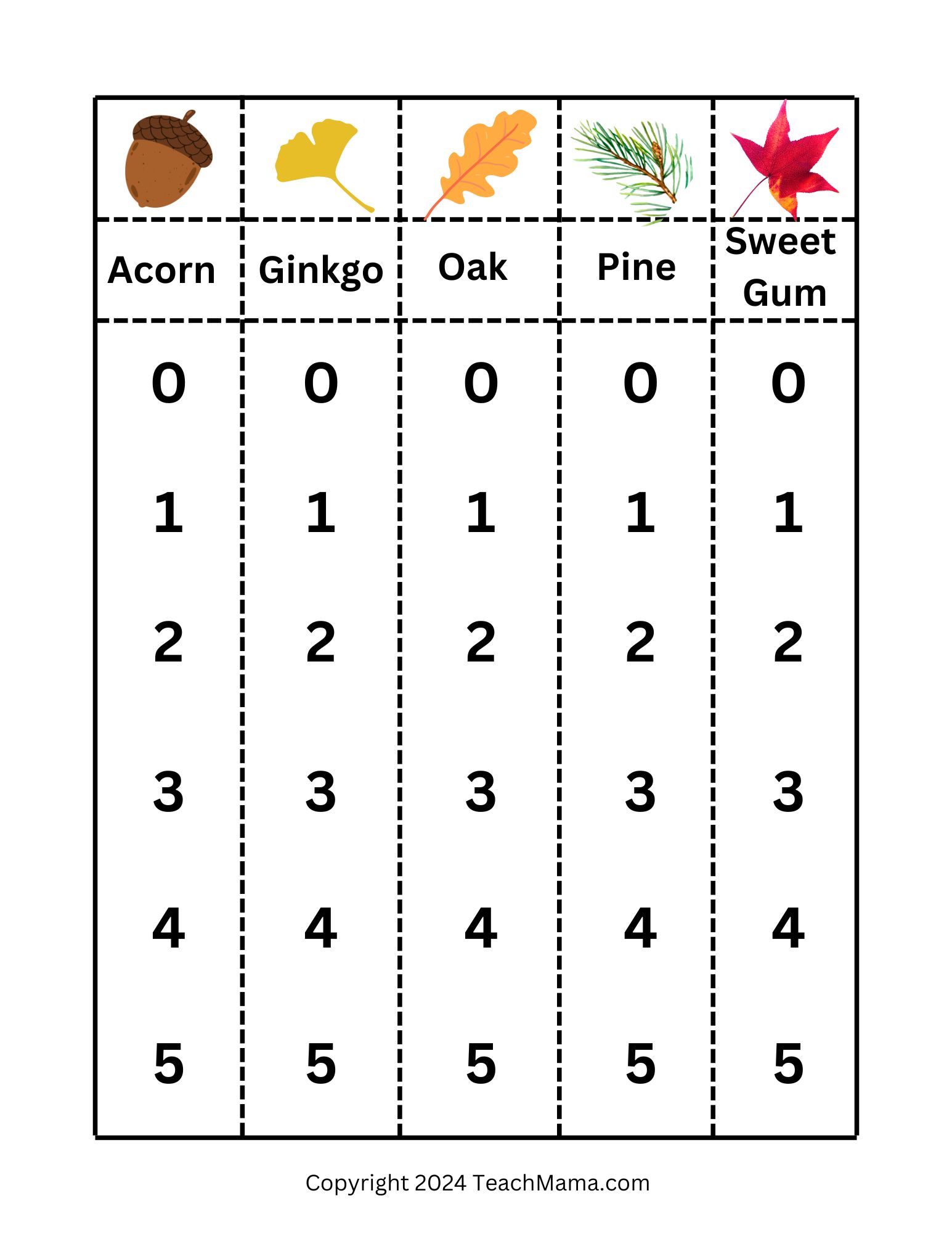
Or Play the Advanced Fall Leaf Grid Game for Third and Fourth Grade
This version of the game is for kids who have graduated to multiplication and division. Use the longer chart (two pages numbered 0 – 12) for this one. In addition to the longer chart, you’ll notice there is also a zero included in each column.
- The players now roll three dice; the two numbered ones and the colored one.
- The color die still indicates which column is played.
- But now the two numbers are used to create a number sentence with the answer being the number covered by a marker.
- Any math function may be used. Players will quickly realize that where 6×6=36 won’t work on the chart, 6÷6 =1, 6-6=0 or 6+6=12 will.
You Can Find Supplies for These Games Here
- Astrobrights White Card Stock
- Laminating Machine (mine is too old to have a review but this one gets great reviews and they are SO affordable now!)
- 1 – 6 Numbered Dice
- Blank Dice
Download Your Free Printable Fun Fall Leaves Math Grid Game Boards Here:
Want to throw in a different Grid Game now and again? Here are just a few. Read on if you really want to know why Grid Games deserve some love:
- Rainy-Sunny Grid Games
- Open Grid Games (for stamps or stickers or letter practice)
- Cats, Hats, and Pumpkins Grid Games
- Bunny Grid Game
PIN THIS FOR LATER
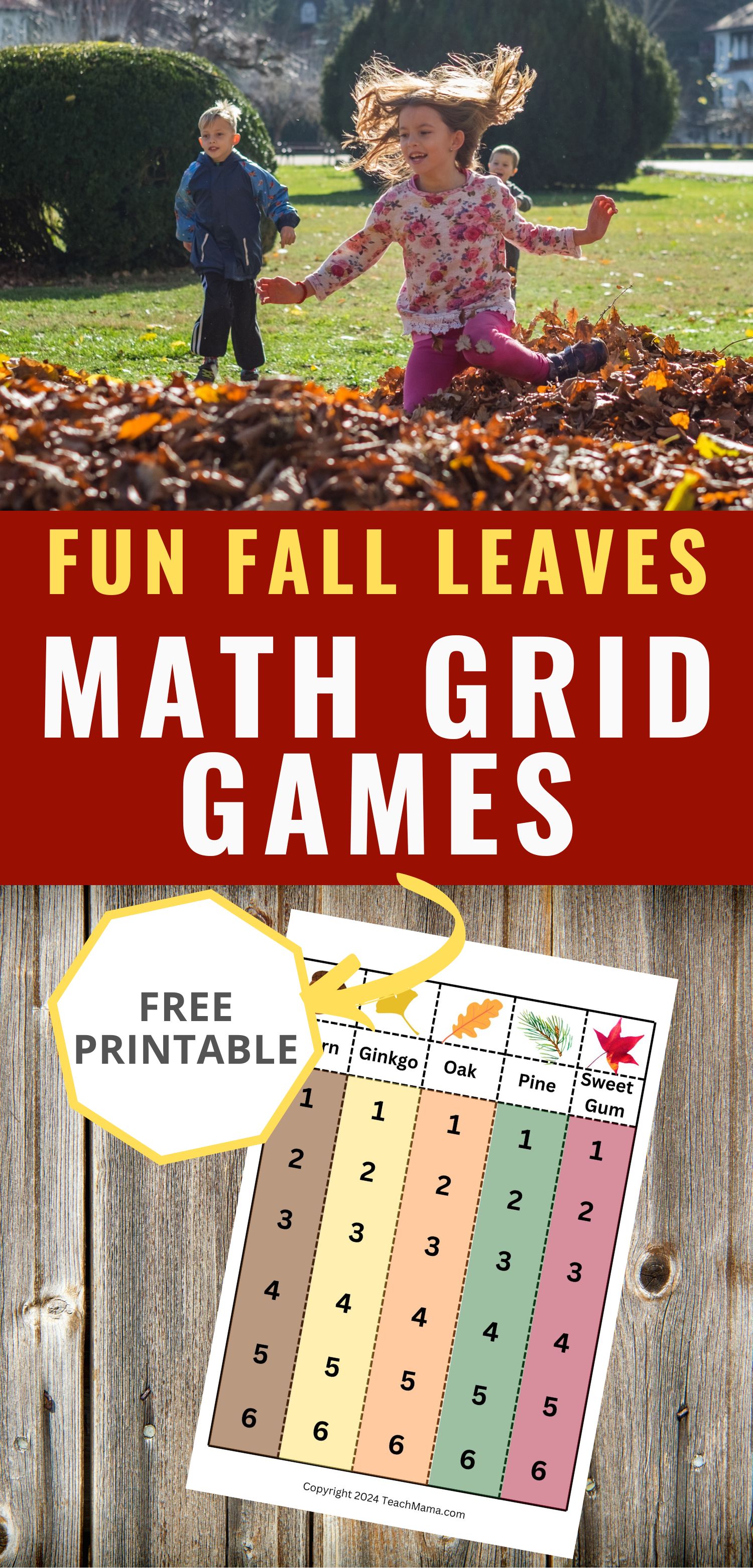

Leave a Reply